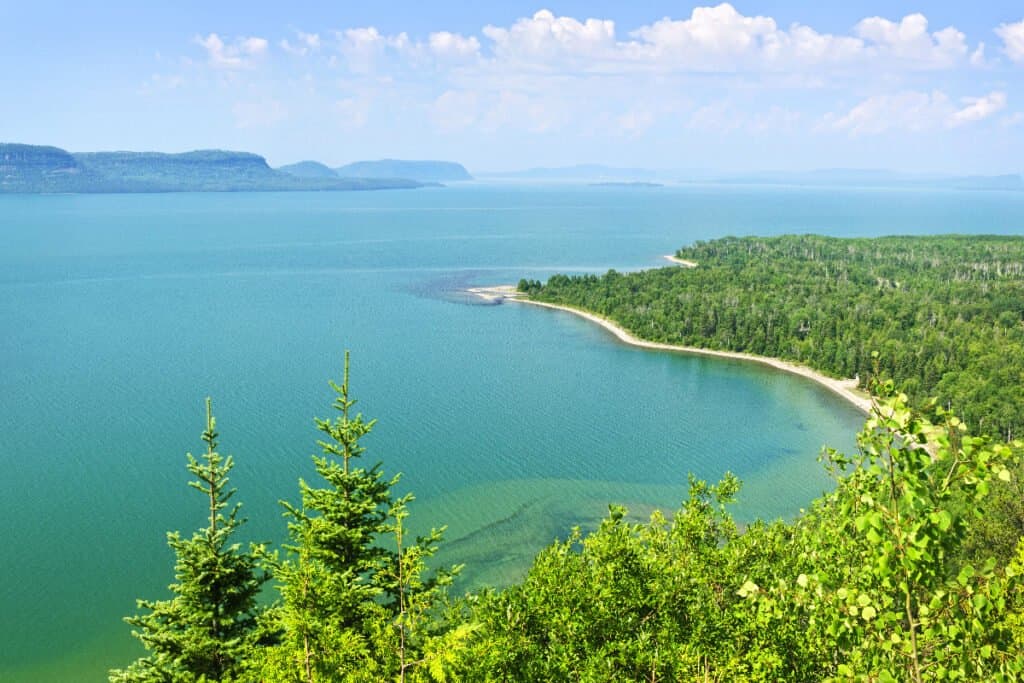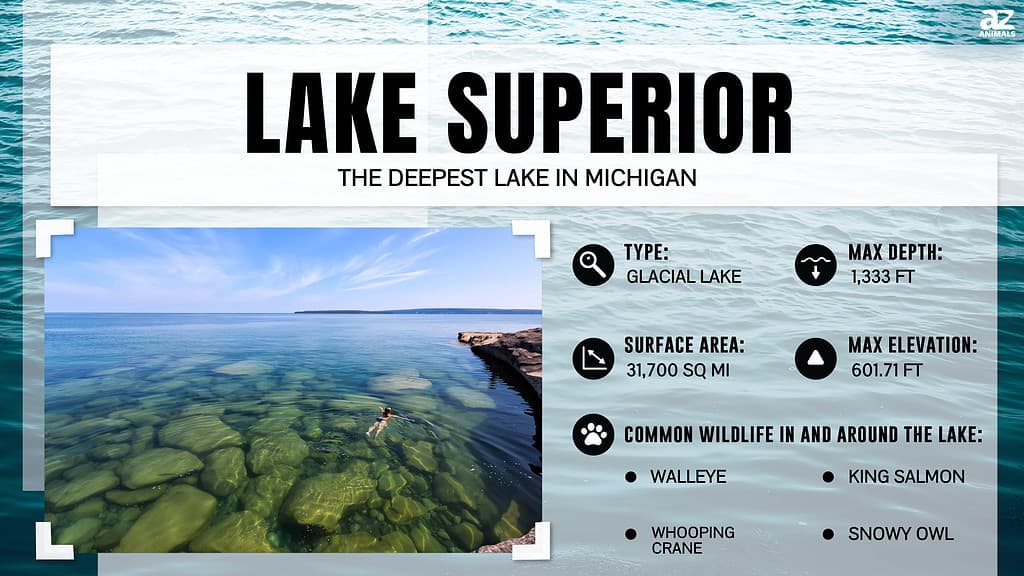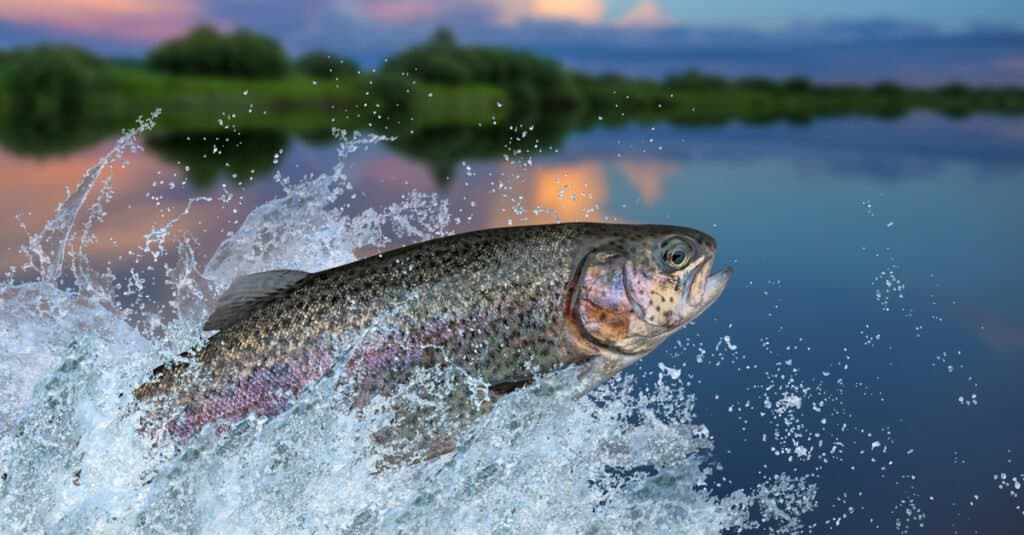The Earth is 71 percent water, which means that the planet consists of various bodies of water ranging from big to small, from ponds to lakes to unmeasurable oceans. It is almost unfathomable how vast these bodies of water can be – some can be millions of surface acres wide and hold millions of cubic miles. But if the wowing sizes of these water bodies are already blowing your mind, wait until you learn how deep these basins can be.
Lakes may not be as deep as the ocean, but they can be extremely deep or deep enough to drown massive sunken ships in their waters. With 58,110 square miles of land and 1,305 square miles of inland water, Michigan sure does hold records when it comes to massive lakes, especially given that the state also occupies 38,575 square miles of the Great Lakes water area. So, what is the deepest lake in Michigan? Below, we will discover the answer to that and more.
What Is the Deepest Lake in Michigan?
This question may have varied answers depending on what type of lake we are talking about. So, for the sake of this article, we will be discussing the two deepest lakes in the state by category. The biggest and deepest of the Great Lakes, Lake Superior takes home the title of the deepest lake in the entire state of Michigan. However, since it touches other state boundaries, encompassing Ontario, Canada, Wisconsin, Minnesota, and Michigan’s Upper Peninsula in the United States, it won’t qualify as the state’s deepest inland lake. With that in mind, the deepest inland lake trophy goes to Torch Lake, Michigan’s longest inland lake and state pride. We will discuss each of them further below.
Deepest Lake in Michigan: Lake Superior

Lake Superior has 10% of the world’s surface fresh water.
©Elena Elisseeva/Shutterstock.com
Lake Superior is one of the most popular lakes in North America as it is the largest, coldest, northernmost, and deepest of the five Great Lakes that collectively create the largest freshwater system on the continent. Apart from all these, Lake Superior is also the largest freshwater lake in the world, and it is said to store 10% of all freshwater on the planet’s surface, surpassing all other freshwater lakes in terms of surface area. In addition to these accolades and records, Lake Superior also boasts a rich freshwater ecology and incredible underwater visibility.

Where Is Lake Superior Located on the Map?
Lake Superior sits in two countries, the United States and Canada. Its surface is divided among Michigan, Minnesota, and Wisconsin, in the former, and Ontario, in the latter.
How Deep Is Lake Superior?

Lake Superior has a depth of 1,333 feet.
©Sorayot Chinkanjanarot/Shutterstock.com
Astonishingly, Lake Superior has a depth of 1,333 feet. It certainly has a huge amount of water, with a surface area that is 350 miles long and 160 miles broad. The lake’s total surface area is 31,700 square miles and has a 2,900 cubic mile water volume. Can you believe there is more water in Lake Superior than in all the other Great Lakes combined, plus three extra Lake Erie’s?
Lake Superior rarely freezes entirely because its deepest point is 1,333 feet below the surface. Deep lakes provide massive heat storage and allow the lakes to better resist freezing. Although the lake is deep, it has some of the purest and most pristine water in the world, with an average underwater visibility of 27 feet. The visibility can potentially reach 30 meters in some places.
However, the lake is an example of the adage “with great power comes great responsibility.” Being the deepest lake in Michigan, the lake’s waters are a ghost town, hosting around 350 shipwrecks spread throughout the decades.
Following Great Slave Lake in Canada, Lake Superior is the third-lowest point in North America and the second-lowest in the country. In 1985, American limnologist J. Val Klump became the first individual to reach Lake Superior’s lowest point.
Shipwrecks in Lake Superior
Due to its varying depths and erratic weather, Lake Superior has had nautical catastrophes over the years. Lake Superior has a record of 350 shipwrecks and has taken more or less 10,000 lives throughout the years. These lives were lost due to frigid waters, and some of the bodies were never found.
The SS Edmund Fitzgerald was the last vessel to capsize in the lake’s waters in 1975. The ship was the biggest to cross the Great Lakes of North America, and the incident was the worst ship disaster in the region. The ship’s 29 crew members all perished along with it.

The skin of the Sculpin is prickly and the spines on its head and fins contain a poison. It’s easy for a fisherman to get stuck by this fish’s spines while handling it.
©Nadezhda Malysheva/Shutterstock.com
Animals around Lake Superior
While fish are obviously the main animal you will find in Lake Superior – there are over 80 species that thrive in this relatively infertile lake – including coho salmon, lake trout, king salmon, walleye, and the strange and rare sculpin. many animals call this area home. Native to the region are black bears, elk, white-tailed deer, and beavers. Herons, bald eagles, snowy owls, and whooping cranes are among the native bird species.
Deepest Inland Lake in Michigan: Torch Lake
In Michigan, Torch Lake, which was formerly connected to Lake Michigan, is renowned for its turquoise-blue waters and outdoor activities. Because of how much its turquoise water mirrors the Caribbean Sea, it is known as the Caribbean Lake. Torch Lake, one of the most well-known lakes in the world, is a well-liked vacation destination in Michigan for both tourists and locals. Torch Lake is the state’s deepest inland lake, which means it is the deepest lake that is completely within Michigan’s borders.
How Deep Is Torch Lake?

The deepest inland lake in Michigan is Torch Lake.
©iStock.com/BeccasDigital
Torch Lake has a maximum depth of 310 feet, which makes it the deepest inland lake in Michigan. It is also the second-largest inland lake in Michigan after Houghton Lake, reaching 19 miles in length and encompassing over 18,770 acres.
Torch Lake has an average depth of 111 feet. Its deepest point is reputed to be 310 feet, though this is up for debate. While some sources claim that the actual depth is just 285 feet, others put the figure at 350 feet for the deepest point. It is a pretty deep lake, regardless. Torch Lake’s average summertime temperature is 71 degrees Fahrenheit.
Why Does Torch Lake Have Caribbean-Like Waters?
Most of the sediments at Torch Lake’s bottom are limestone, which was granulated when glaciers originally sat where the lake currently stands. There is nothing to darken or color the lake’s water due to fine calcium carbonate white silt and very little organic matter. Coincidently, most of the Caribbean is limestone with little organic material, which explains why Torch Lake and the Caribbean Sea have such a similar appearance.
The lake was previously a part of the much larger Lake Michigan, but a sandbar that formed across its northwest outlet caused it to become its own lake.

Rainbow trout can be found in Trout Lake.
©FedBul/Shutterstock.com
Fish in Torch Lake
Torch Lake contains a wide variety of fish, including lake trout, rock bass, yellow perch, smallmouth bass, pike, brown trout, rainbow trout, whitefish, and muskellunge. Not only is this one of the most beautiful lakes in the world – it is an angler’s heaven.
The photo featured at the top of this post is © AnotherViewDroneService/Shutterstock.com
Thank you for reading! Have some feedback for us? Contact the AZ Animals editorial team.






